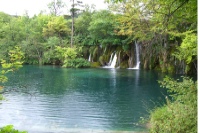
Lifts, just like any other machines or systems, produce two types of noise when they are operating: “airborne” and “structural”.
The latter is more complex because it implies that the building constructor, or those responsible for adapting the existing building, should bear in mind that the vibrations generated by the system moving parts may be transmitted, or even amplified, by certain building structures (metallic, reinforced concrete), if the appropriate measures are not taken.
Naturally, KOPPEL A.W can provide designers with data that permit them to reduce the inevitable impact of these types of noise.
These vibrations are dealt with by the lift sector Standard ISO 18738 "Measurement of lift ride quality" (cabin), which the company takes into account in order to improve comfort in the cabin, and the building itself (insofar as the effects can only be felt in the latter when the lift travels at high speeds).
Returning to the question of noise, legislation in Italy, and in general in Europe, deals with this problem from two distinct points of view:
- external noise, when the building is situated in a certain part of the city or region where the noise emitted by buildings must not exceed certain levels; lifts generally do not generate sufficient noise levels to have an impact in this context;
- internal noise, which is covered by the Prime Ministerial Decree of 5th December 1997 “Determination of the passive acoustic requirements in buildings”, where the noise generated by lifts may have an impact.
In particular, the value LAXmax measured in residential and public environments must never exceed 35 decibel, which is, quite correctly, a very low level. Not all lift systems, or at least not always (including systems manufactured by KOPPEL A.W.), are able to meet this requirement intrinsically; the maximum emitted value is indicated in the system design documents.
The designer and the constructor must sound proof the environments close to the machine room and lift shaft adequately. Clearly, from this point of view, lift systems that do not have their own machine room, so that the machinery is located in the lift shaft (usually electrical systems) or even in common areas within the building (usually hydraulic systems), are at a disadvantage since it is more difficult to sound proof them. |



